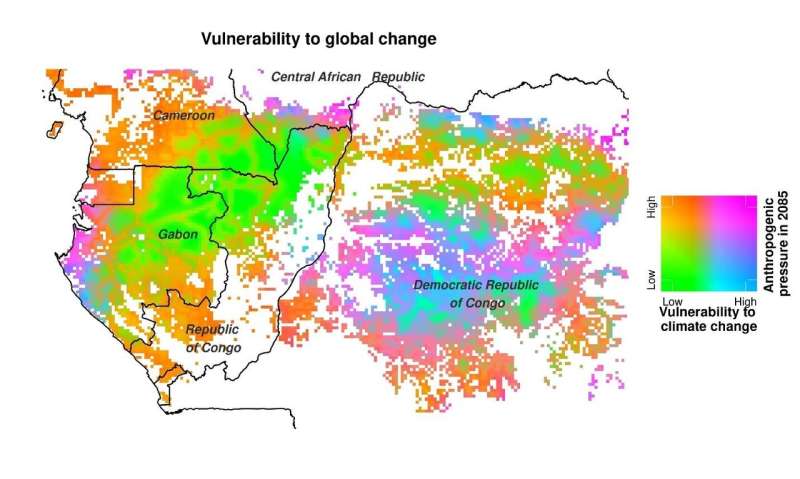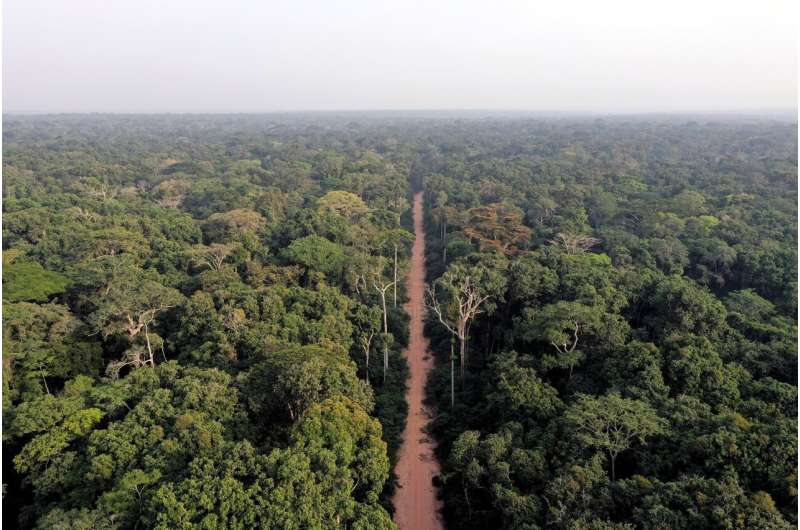Inventory pinpoints the most climate-vulnerable African forests

Huge areas of African forest are highly vulnerable to climate change and man-made activity, according to the most detailed inventory yet of the second largest contiguous forest area on Earth.
The rainforests of central Africa store more carbon per hectare than the Amazon and have a higher density of large trees than anywhere else.
They are a crucial carbon sink but are under threat in several countries due to logging, over-hunting and ever-growing road infrastructure, as well as climate change.
French researchers wanted to identify specific areas of forest that are the most vulnerable to future changes in a bid to prioritise preservation efforts.
They analysed data of six million trees from more than 180,000 field plots spread across Cameroon, Gabon, Central African Republic, Republic of the Congo and Democratic Republic of the Congo (DRC).
Incorporating forest inventory data from 105 logging operations, the team produced computer models to simulate a range of future scenarios and their impact on tree cover.
They identified 10 main types of forest. The models showed that areas of northern and southern forest margins, forests on the Atlantic and most DRC forests are "highly vulnerable" to climate change and man-made activity by 2085.

Maxime Rejou-Mechain, an ecologist at France's Institute of Research and Development, said the study highlighted how diversity in African forests meant some were better suited to facing future threats than others.
"This diversity is due to different types of climate, soils, by the history of African flora but also by the rise of human activities that have disturbed forests for millenia," he said.
The study, published in the journal Nature, found the 15 percent of African forest under official protection doesn't cover all forest types.
Sylvie Gourlet-Fleury, a forest ecologist at the CIRAD research institute and a study co-author, said the research could help governments prioritise specific areas to protect.
"Where pressure from human activity is too strong, managers could re-establish connections between zones thanks to programmes to restore biodiversity," she said.
Writing in a linked comment article, Marion Pfeifer, from Newcastle University's School of Natural and Environmental Sciences, and Deo Shirima, from Tanzania's Sokoine University of Agriculture, said governments needed to cooperate in order to preserve the continent's forested regions.
"Perhaps most crucially, rainforests in Central Africa and the ecosystem services they provide are intertwined with people's livelihoods and food security," they said.
"Developing sustainable management plants that recognise the diversity of ways in which people depend on these forests... will require efforts that move beyond national boundaries."
More information: Unveiling African rainforest composition and vulnerability to global change, Nature (2021). DOI: 10.1038/s41586-021-03483-6
Journal information: Nature
© 2021 AFP





















